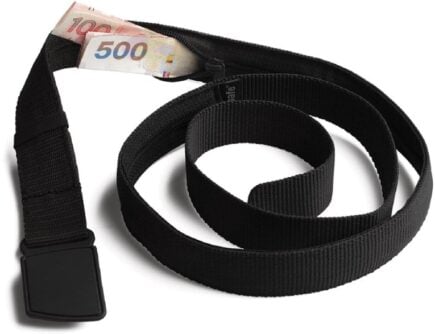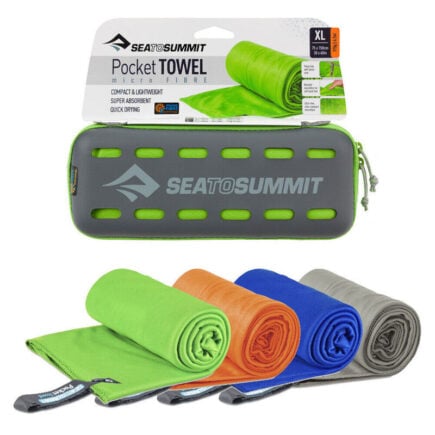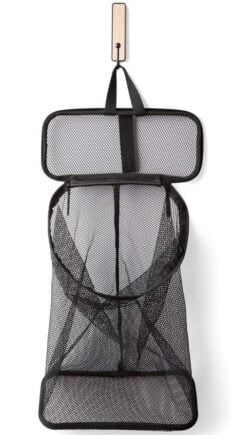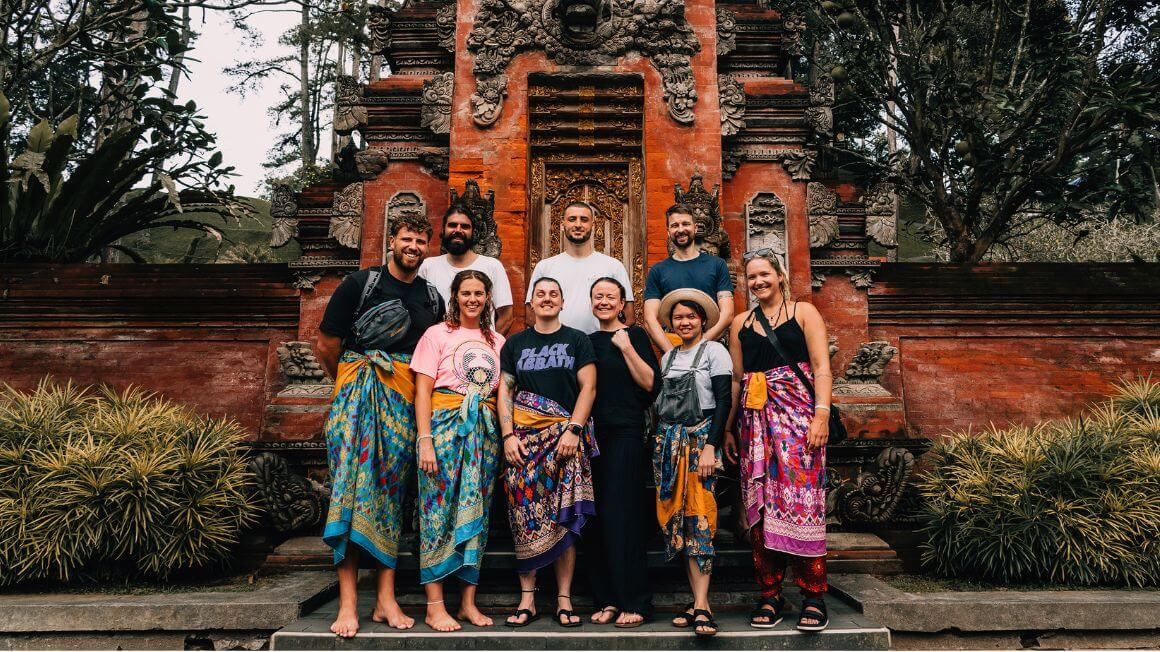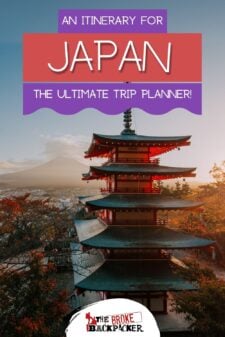Japan is magical, mystical and mysterious.
It’s often seen as a fleeting adventure, a whirlwind visit of 5 days, maybe a week, where tourists capture the iconic Instagram shots, eat some sushi, and consider their mission accomplished. However, most of these people inadvertently miss out on the essence that defines this wonderful country – the very soul of Japan.
In October 2023, I spent over a month backpacking and hitchhiking across this wonderful country. Before I left Japan, I was already planning my next trip back.
So lucky for you, dear reader, I have created ULTIMATE Japan Itinerary from my very own experience including all the places I believe you absolutely CANNOT miss on your Japan trip, including the best hidden gems, whether it’s one, two or three weeks I’ve got it all for you…
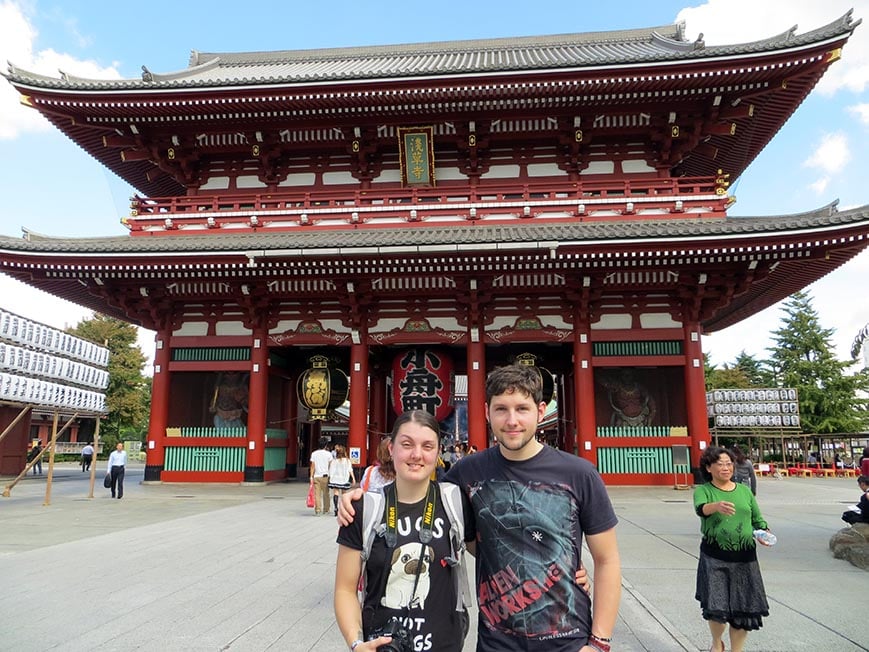
Photo: Nic Hilditch-Short
The Broke Backpacker is supported by you. Clicking through our links may earn us a small affiliate commission, and that's what allows us to keep producing free content 🙂 Learn more.

Unlock Our GREATEST Travel Secrets!
Sign up for our newsletter and get the best travel tips delivered right to your inbox.
The Best Time to Visit Japan
A trip to Japan is a good idea year-round, but it does have a few different seasons you should be aware of depending on what type of trip you’re looking for and what type of clothes you want to pack!
- Spring (March-May) – Best for Cherry Blossoms: Spring is the perfect season to get a good balance of temperatures across the country, though some areas might still be pretty chilly early on. Also, sakura season can make things expensive.
- Summer (June–August) – Summer brings with it hot and humid weather across many areas of the country but it is also perfect for those wanting to hike in the higher altitude areas.
- Autumn (September–November) – Autumn is a beaut of a time to come to Japan as the fall foliage is in full effect and temperatures are generally still pretty mild.
- Winter (November-Febuary) – Expect cold and wet conditions, even in Tokyo. Snow is also common in many parts of the country, which is ideal if you’re travelling for snow sports!
Weather in Japan
Whilst Japan generally sticks to the northern hemisphere seasons, even though it’s a relatively small country, it does also have a few distinct regions with different climates.
This includes the Subarctic Climate of places like Hokkaido (which makes it the best time to visit Japan for snow sports but bloody cold in winter for casual travellers) all the way down to the subtropical climate of locations like Okinawa (making it a great spot to escape the cold!)
Places like Tokyo are generally not extreme at any time of year, but you should bear in mind that winters can be slightly chilly and wet.
1 Week Japan Itinerary: The Highlights
Whilst spending just 1 week in Japan is honestly pretty hectic and not ideal, I have still tried my best here to put together an itinerary that will hopefully cover many of the highlights.
Japan in 1 Week: The Breakdown
- Osaka
- Kyoto
- Mount Fuji & Lake Kawaguchiko
- Tokyo
This is a great route any time of year but it’s best to visit in Spring and Autumn.
- Golden Pavilion in Kyoto
- Fushimi Inari Taisha
- Seeing Mount Fuji
- View from the Tokyo SkyTree
Stop 1 – Osaka (Day 1 & 2)
Osaka is the BEST place to begin your solo travel journey in Japan. You might wonder why not Tokyo? Tokyo is a bit of an oddball among Japanese cities. It has its own unique vibe, and the folks in Tokyo don’t quite represent the general Japanese demeanour. So, I suggest you save Tokyo for the end of your trip, not the beginning.
Osaka holds the position of being the third major tourist destination city in Japan. It may not be as densely packed with tourists as Kyoto, but it’s also not as fast-paced and bustling as Tokyo.
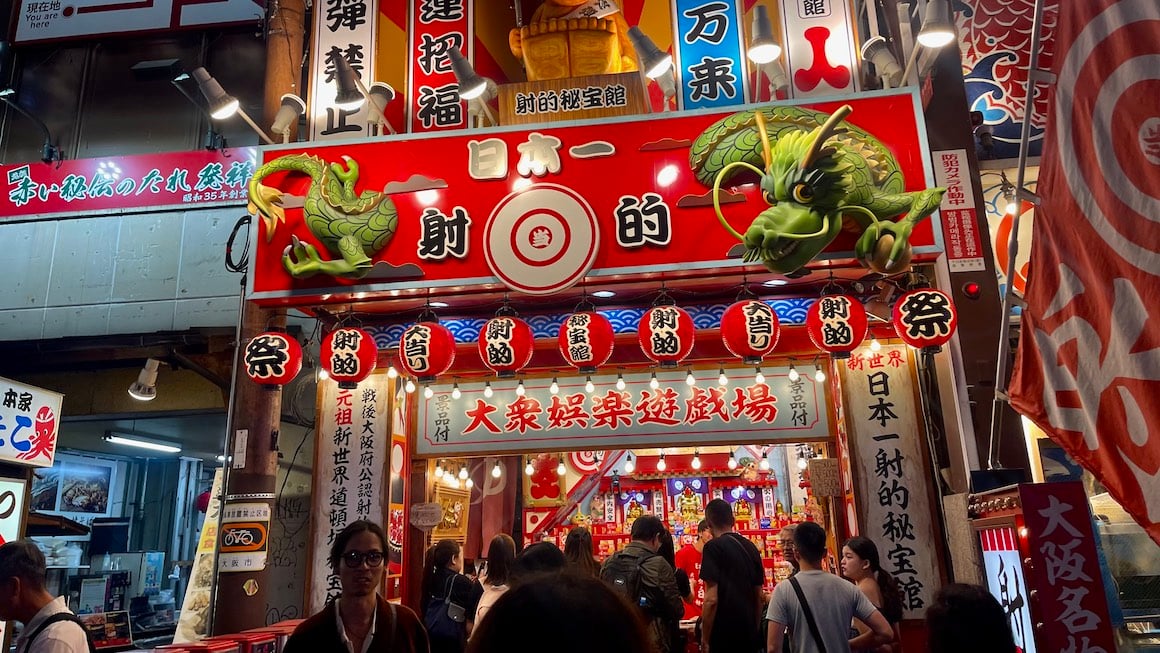
Photo: @audyscala
Foreigner or Japanese, you’re bound to make some friends here, especially if you stay in a homestay in Osaka.
Here’s some great things to do in Osaka:
- Explore Osaka Castle: This iconic castle, a historic symbol of the city, offers a glimpse into Japan’s rich history. The castle’s interior features a museum showcasing artefacts from the past, and the beautiful park surrounding it is perfect for a stroll.
- Dotonbori Street Food: Osaka is known for its delicious street food, and Dotonbori is the place to try it. Don’t miss trying takoyaki, the famous octopus balls, and okonomiyaki, savoury pancakes loaded with delicious toppings.
- Shop in Shinsaibashi: The trendy district of Shinsaibashi is a shopaholic’s paradise. From high-end boutiques to quirky Japanese fashion, you can find stuff here you will never see anywhere else.
- Catch a Show at Universal Studios Japan: For family-friendly entertainment and thrilling rides, Universal Studios Japan is a fantastic choice. Experience the magic of movies and themed attractions.
There is no shortage of cool places to stay in Osaka – it’s one of the places to go in Japan that are more suited to hosting backpackers, especially solo travellers. With tonnes of cool hostels and plenty of esoteric nightlife, it’s a very good part of the country to visit if you’re feeling the isolation that sometimes creeps up when backpacking in Japan.
Where to Stay in Osaka: Hotel She Osaka
With stylish and modern rooms, this three-star establishment will make sure all your needs are met during your stay. With an amazing onsite bar and a tasty oriental restaurant, you will be kept on top form for as long as you remain.
View on Booking.comStop 2 – Kyoto (Day 3 & 4)
There are hundreds of temples and shrines in Kyoto and you could spend a lifetime trying to visit them all. Among the ancient temples, you can also explore the hip, alternative side of Kyoto. Kyoto has a sweet underground scene too, though maybe not to the degree of Osaka.
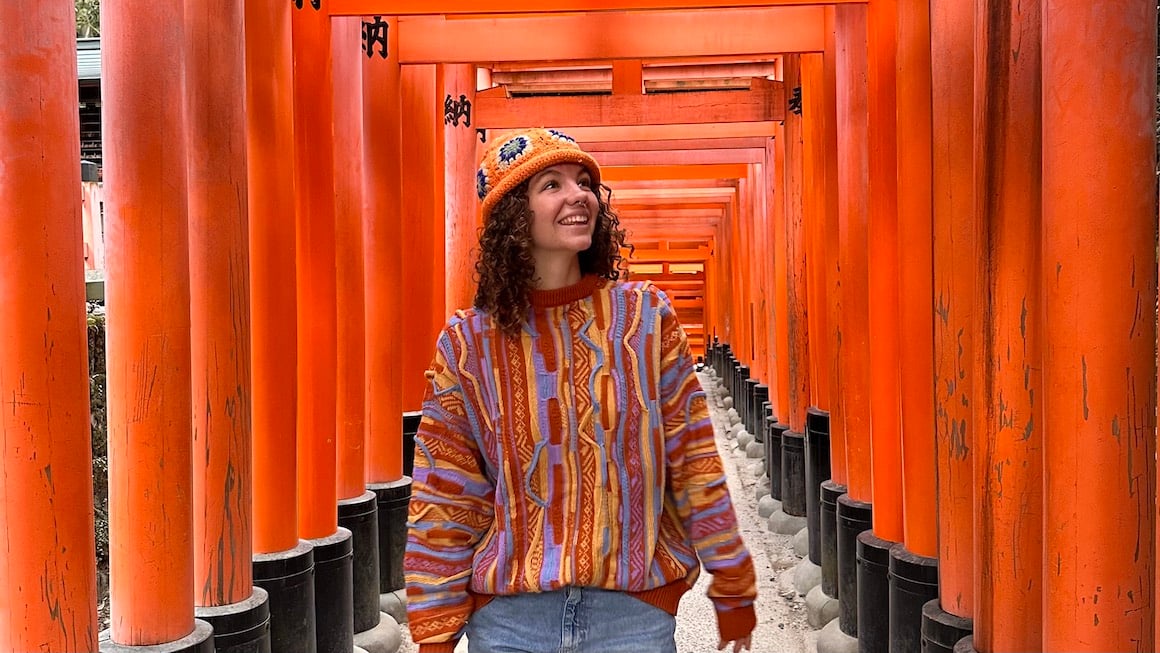
Photo: @audyscala
Here are some of the most popular things to do in Kyoto:
- Visit the Golden Pavilion (Kinkaku-ji): This iconic temple was interestingly rebuilt after a tragic incident when a monk set fire to the original 14th-century temple. It’s absolutely stunning and a great place to hang out during the day.
- Fushimi Inari Taisha: Explore the famous Fushimi Inari Shrine with its thousands of vibrant red torii gates that lead you up to Mount Inari. The hike to the summit is a pilgrimage in and of itself.
- Higashiyama and Gion: Visit the historic geisha districts of Higashiyama and Gion, known for their beautiful old tea houses, shrines, and charming streets like Pontocho Alley. Take a tea ceremony, or rent a kimono and have the full traditional experience.
- Arashiyama Bamboo Grove: Stroll through the mesmerizing Bamboo Grove in Arashiyama, near the famous Tenryu-ji temple, one of the most beautiful places in Japan.
- Kyoto Tower: Enjoy dinner in central Kyoto and visit Kyoto Tower for a fantastic 360-degree view of the city, especially captivating at night.
If you are planning a trip to Kyoto for the first time, especially as a solo traveller, you should try to stay in Gion, the Geisha district; it is crazy colourful and full of life. A Japanese friend gave me some tips on the correct etiquette when interacting with Geishas; Never talk to a Geisha or try to stop them for photos as this is considered extremely rude.
Where to Stay in Kyoto: Hana-Touro Hotel Gion
Located close to Gion, Kyoto’s most famous geisha district, this boutique hotel opened in 2017. It offers a modern base from which to explore historic Kyoto. All rooms have a private bathroom. There are spacious rooms for two and four, with a choice of Western rooms or traditional Japanese sleeping arrangements
View on Booking.comStop 3 – Mount Fuji & Lake Kawaguchiko (Day 5)
Lake Kawaguchiko, one of the Fuji five Lakes, is arguably the best place for the ULTIMATE views of Fuji-san. It’s a great way to have a peaceful day after loads of excitement and intensity visiting the bustling cities of Japan. You can opt for a day trip from Tokyo, as many do, or better yet, stay the night to catch both the sunrise and sunset painting Mt. Fuji with its radiant colours in the backdrop.
You can rent bikes here by the day and take a chill bike ride around the lake, taking in the views and stopping at various activities along the way such as:
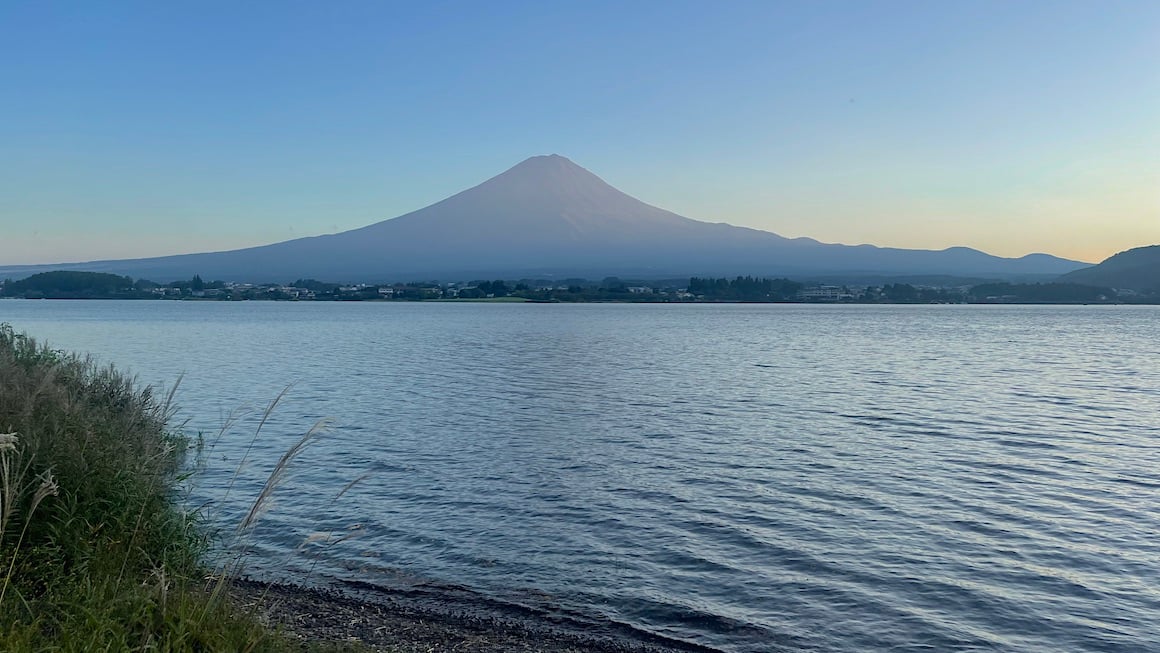
Photo: @audyscala
- Museums: Three very popular museums are worth checking out such as the Kawaguchiko Music Forest Museum, Kubota Itchiku Art Museum, and the Contemporary Art Museum.
- Iyashi No Sato: Close to the lake you can explore a traditional town otherwise called the “healing village” You can spend 2-4 hours at Iyashi no Sato to explore the traditional houses and enjoy arts and crafts activities, all whilst relaxing in the mystical mountains.
- Fuji-Q Highlands: A famous amusement park at the base of Mount Fuji, featuring thrilling roller coasters like “Fujiyama” which was once the tallest and fastest coaster in the world.
- Oishii Park: A beautiful park with gardens full of colourful flowers and iconic views of Fuji, make sure you grab some food or ice cream and take in the views.
Where to Stay in Mt Fuji: T&T Fujiyama Guest House
Lovely property an easy walk from Shimoyoshida train station where you can stay in traditional Japanese rooms. The hosts are also super nice and will go out of their way to make your stay wonderful.
View on Booking.comStop 4 – Tokyo (Day 6 & 7)
Backpacking Tokyo is on every traveller’s itinerary when planning their trip to Japan. Tokyo is a place where one can truly blend in, radical self-expression is normalized, a place where fur-covered platform boots and spikey hair seamlessly blend with sleek businessmen and perfectly ironed suits. You can be whoever you want to be and no one bats an eye.
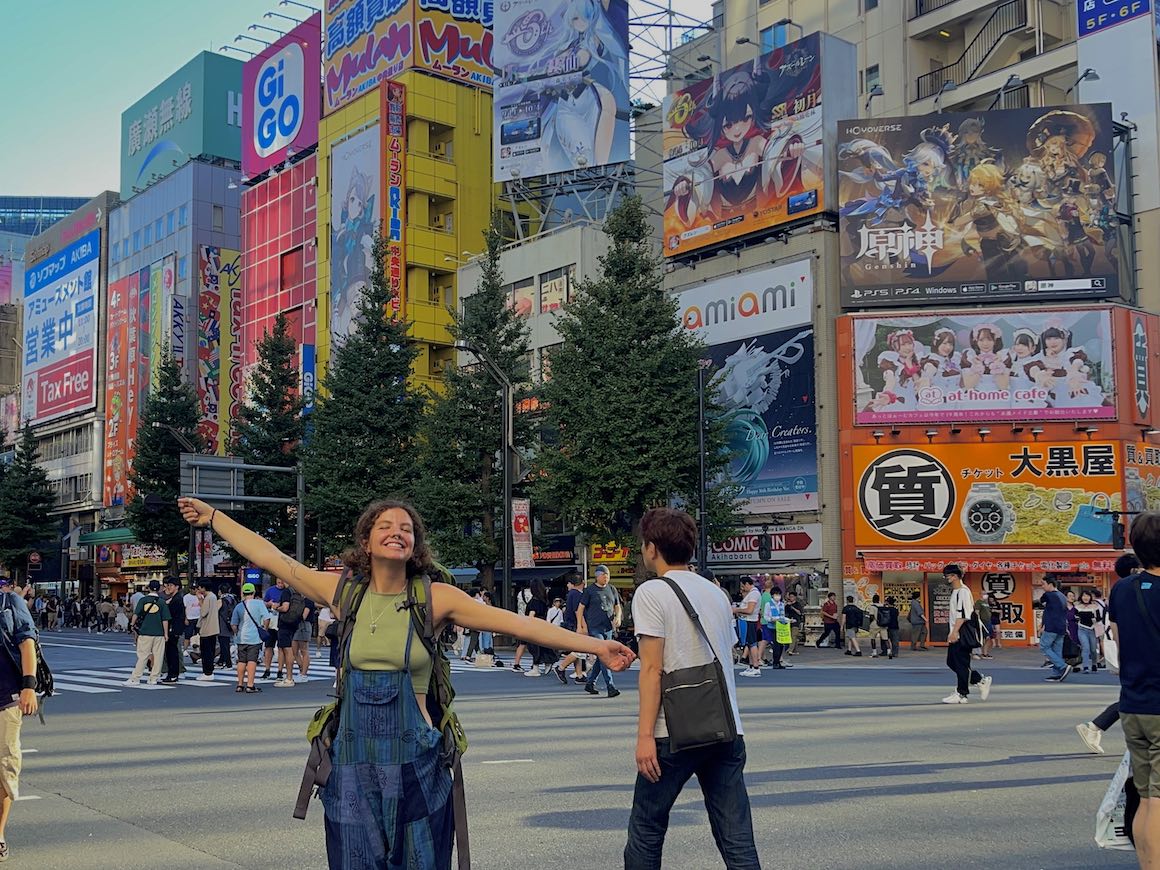
Photo: @audyscala
Here are some fun things to do in Tokyo, just know that there’s A LOT to do here so whether you’re spending a weekend in Tokyo or much longer, be sure to plan out your time properly.
- Studio Ghibli Museum: This must-see attraction for anime enthusiasts requires advance booking and can be reserved at convenience store machines, I made the mistake of not booking ahead and I really regretted it.
- Tsukiji Fish Market: Visit the world’s largest fish market, a truly wonderful experience. You can eat all the FRESH sushi your heart desires. Be sure to arrive early to experience its bustling atmosphere.
- Tokyo SkyTree: Purchase a ticket to Japan’s tallest tower for stunning 360-degree views of the city and the potential to see Mt. Fuji on a clear day.
- The nightlife of Golden Gai: This narrow alleyway, filled with back-street bars, is a lively and somewhat red-light-district ambience. Even if you’re not a drinker, take a stroll through this super cool area to see a rather unique side of Japanese culture.
Tokyo is a super safe city to get loose in, so definitely try to get out and wander the neon-lit nighttime streets. Some of the parks in Tokyo can be rather good fun to visit too, and it is worth wandering around Harajuku to catch a glimpse of the infamous ‘Harajuku girls’.
Where to Stay in Tokyo: UNPLAN Shinjuku
Shinjuku is the beating heart of Tokyo and the ideal place to stay for those who want to experience one of the best hostels in Japan. It’s close enough to the action, yet quiet at night, so you can still get a good night’s sleep.
View on Booking.com2 Week Japan Itinerary: Extended Highlights
Ok, for those of us on a more traditional two-week vacation, this itinerary for a fortnight in Japan is the perfect way to see most of the highlights in one epic trip.
Japan in 2 Weeks: The Breakdown
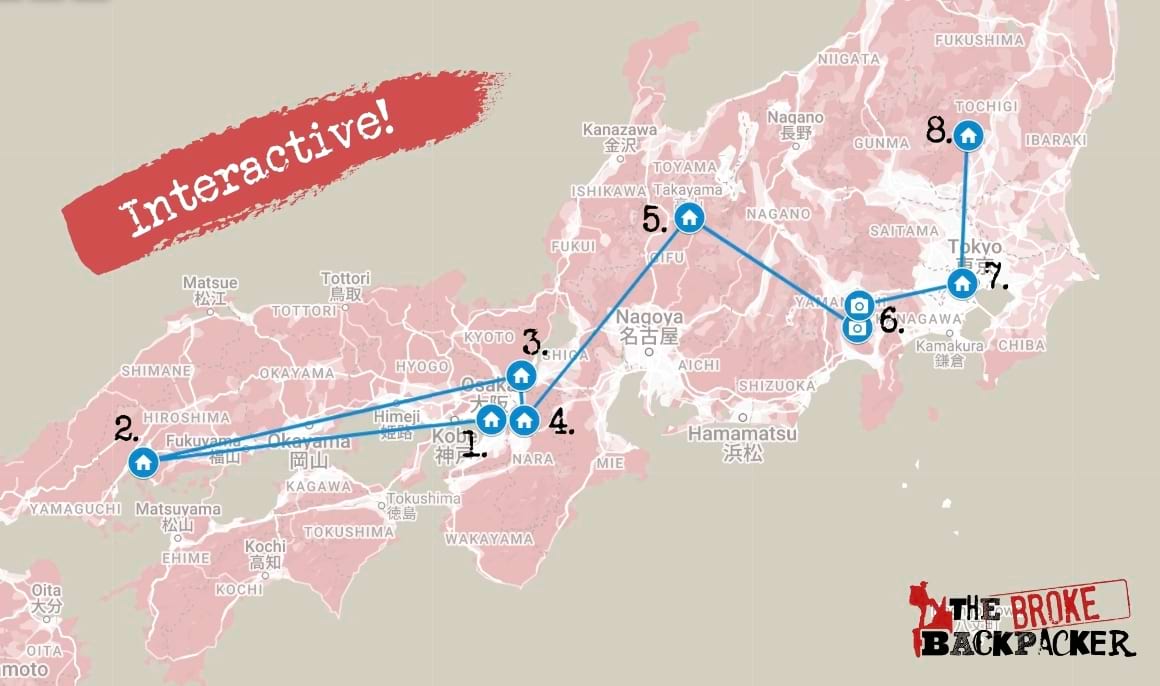
- Osaka
- Hiroshima
- Kyoto
- Nara
- Takayama
- Mount Fuji & Lake Kawaguchiko
- Tokyo
- Nikko
Spring and Autumn are the best months to visit these areas of Japan, but summer is also a fun time if you can handle the heat.
- Discovering a new story at the Hiroshima Peace Memorial Park
- Making friends with deer in Nara
- Seeing a more traditional side to Japan in Takayama
- Cruising across Lake Kawaguchiko
Stop 1 – Osaka (Day 1-3)
I went into detail earlier in the post about what to put on your Osaka itinerary. But I do love this city and how different it is from Tokyo.
The people of Osaka take pride in their relaxed demeanour, setting them apart from the stereotype of Tokyoites. They embrace their unique slang, express themselves more freely in conversation, and love a good comedy show. Osaka is like a breath of fresh air.
Where to Stay in Osaka: Hotel She Osaka
With stylish and modern rooms, this three-star establishment will make sure all your needs are met during your stay. With an amazing onsite bar and a tasty oriental restaurant, you will be kept on top form for as long as you remain.
View on Booking.comStop 2 – Hiroshima (Day 3 & 4)
Hiroshima is most notably known for the devastating atomic bombing during World War II on August 6, 1945, which led to the destruction of the city and the loss of tens of thousands of lives. However, today Hiroshima is thriving, and a beautiful place to add to your itinerary.
The poignant Hiroshima Peace Memorial Park is heartbreaking. The park tells the story of this fateful day.
In the park, you’ll find the Atomic Bomb Dome – the site where the first atomic bomb hit, and now just a skeletal reminder of the past. The park is free to get into and it costs under a dollar. It’s well worth it to visit the museum.
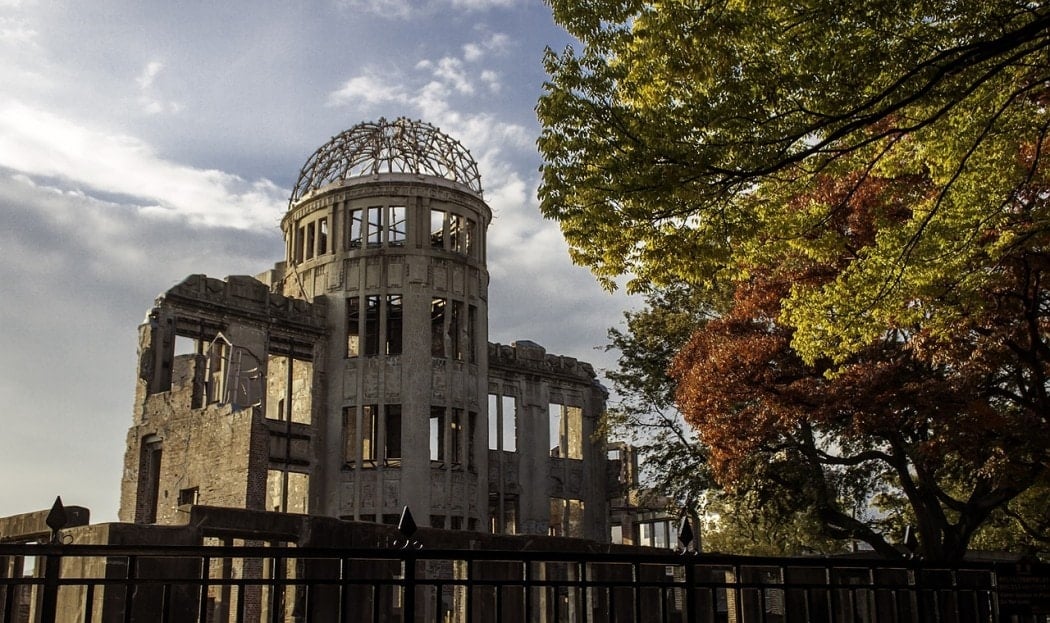
Hiroshima can be really worthwhile but somewhat distressing experience – do some research beforehand so that you have a basic idea of what occurred here before booking somewhere to stay.
If you have a spare day on your hands, head off to beautiful Miyajima. An easy day trip from Hiroshima, Miyajima is a fantastic island covered in gorgeous woods. Hike up into the hills to escape the tourist crowds and discover some awesome views as well as herds of mystical deer.
Where to Stay in Hiroshima: WeBase Hiroshima
Located within less than 1 km of Atomic Bomb Dome this chic, modern accommodation provides a mixture of pod style bunks in dorms alongside private rooms.
View on Booking.comStop 3 – Kyoto (Day 4-6)
I’ve already spoken about Kyoto, but I have to mention it again here. I won’t go into the details again but on this itinerary, you’ll have a little extra time to play around with meaning you can take your time and soak it all in at a more leisurely pace.
If you do find yourself with some spare time, I suggest venturing to lesser-visited temples such as Nanzen-Ji or Daitoku-Ji which provide great escapes from the crowds.
Where to Stay in Kyoto: Hana-Touro Hotel Gion
Located close to Gion, Kyoto’s most famous geisha district, this boutique hotel offers a modern base from which to explore historic Kyoto. There are spacious rooms for two and four, with a choice of Western rooms or traditional Japanese sleeping arrangements
View on Booking.comStop 4 – Nara (Day 7)
One Japan travel tip I’ve got for ya’ is that Nara is a must-visit on your 2-week itinerary and of course, it’s all about those bloody cute deer. With just a day here you’ll not really have a chance to add anything more that I’ve already mentioned, so just soak it all in and enjoy your time in this magical place.
Where to Stay in Nara: HARUYA Naramachi
Stay in this little cute traditional style Ryokan with an onsite Onsen, tea ceremonies and bike rental. It’s also super close to the deer!
View on Booking.comStop 5 – Takayama (Day 8)
Takayama is an authentic Japanese old town beautifully preserved for 1600 years. Being Japan’s “Little Kyoto”, it retains its traditional charm, without the crazy over-tourism of Kyoto.
Many people are slightly overwhelmed when they go to Kyoto and the sheer number of tourists takes away from the charm; my stay in Takayama was what I was expecting when I went to Kyoto. Most of the wooden buildings in Takayama are well-preserved since the Edo period and are still used today as houses and shops, it really feels like you’re stepping back in time.
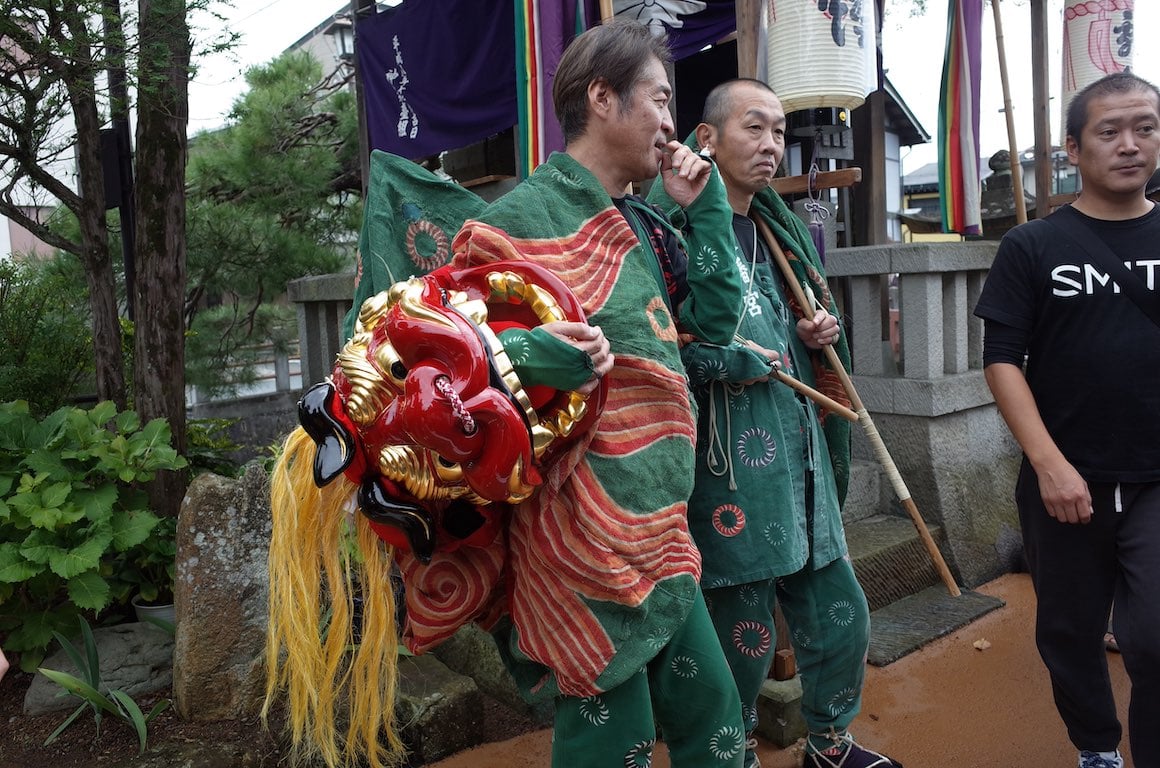
Photo: @audyscala
For a deeper immersion in the region’s heritage, head over to the Hida Folk Village, an open-air museum showcasing over 30 traditional thatched-roof houses. The city is home to sake breweries, providing an opportunity for sake tasting and learning about the local brewing process. Strolling through the Takayama Morning Markets is perfect for sampling local produce and discovering unique souvenirs, like wood-carved buddhas and handmade incense.
Where to Stay in Takayama: Yukimurasaki
Offering rooms with heated tatami flooring, a private hot-spring bath and a balcony with nature views, this hotel is a traditional paradise in this incredible town.
View on Booking.comStop 6 – Mount Fuji & Lake Kawaguchiko (Day 9 & 10)
I’ve added this stop in on my other itineraries, so no need to repeat myself. Only to say, depending on how your transport works out, you should have plenty of time to explore this area and take in its sheer beauty. If you have time I recommend doing a cruise across the lakes itself or visiting more local attractions like the Itchiku Kubota Art Museum.
Where to Stay in Mt Fuji: T&T Fujiyama Guest House
Lovely property an easy walk from Shimoyoshida train station where you can stay in traditional Japanese rooms. The hosts are also super nice and will go out of their way to make your stay wonderful.
View on Booking.comStop 7 – Tokyo (Day 11-13)
Of course, Tokyo needs to be on every itinerary I put together here and since I’ve already mentioned it before, there’s no need to repeat myself. With just a couple of days here you’ll just have time to hit up the highlights so you really don’t have time to mess around. My tips would be to pick the things you really want to see and plan your days out to get them done.
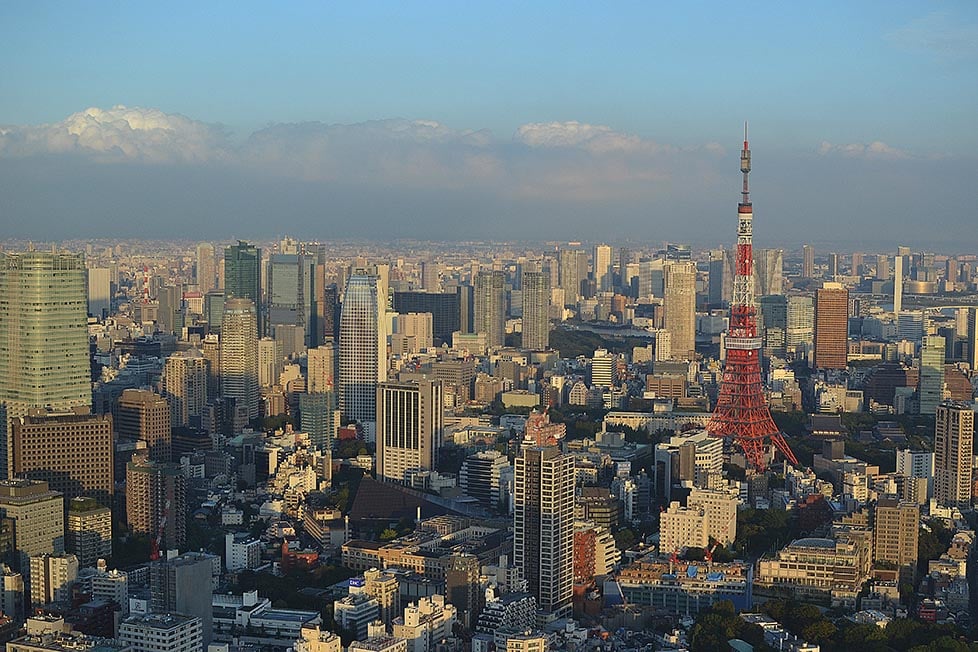
Photo: Nic Hilditch-Short
Where to Stay in Tokyo: UNPLAN Shinjuku
Shinjuku is the beating heart of Tokyo and the ideal place to stay for those who want to explore all of Japan. It’s close enough to the action, yet quiet at night, so you can still get a good night’s sleep.
View on Booking.comStop 8 – Nikko (Day 14)
Nikko lies north of Tokyo, It takes about 2-3 hours each way to get there and back from Tokyo. Nikko is a wonderful place known for its forests, waterfalls, and natural hot springs – a peaceful day away from the busyness of Tokyo. You can make this a day trip, which would include a lot of travelling, or head here for a night to eliminate some stress.
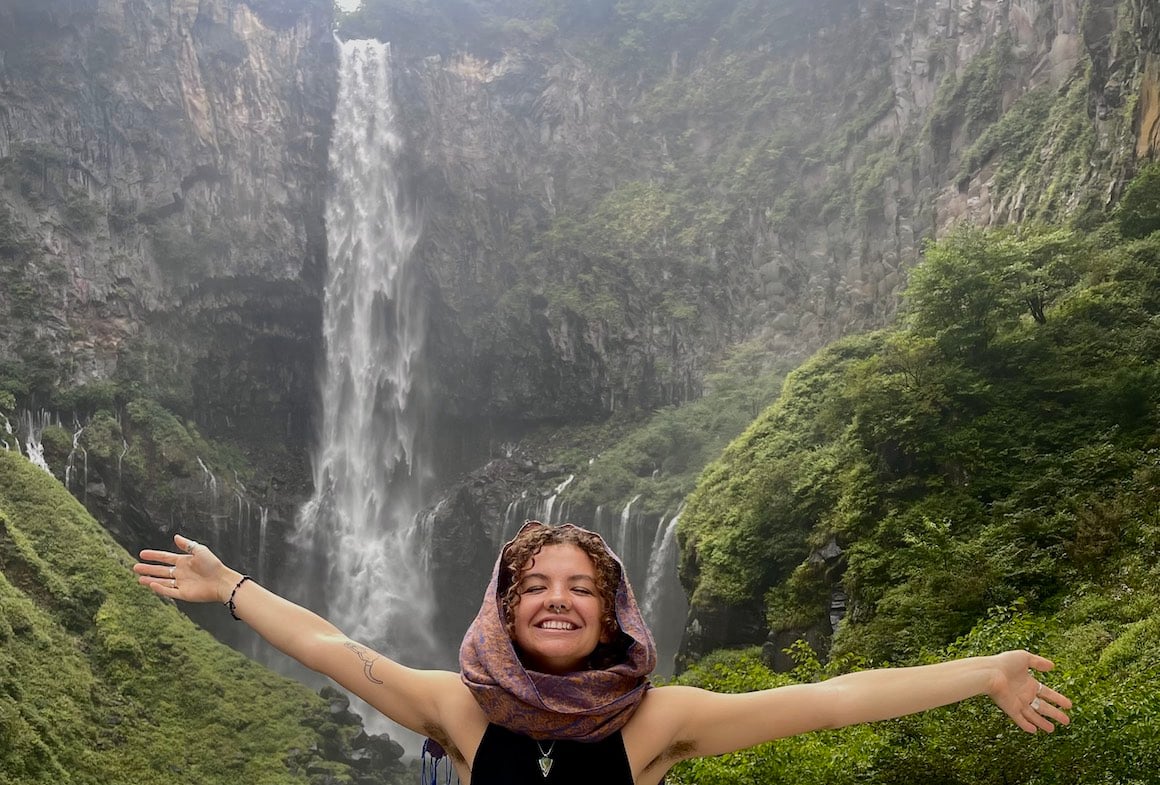
Photo: @audyscala
One of the most famous places in Nikko is the Toshogu Temple, the final resting place of Tokugawa Ieyasu who ruled Japan for over 250 years. He was a pretty important guy, and you can tell by how elaborate and beautiful his tomb and shrine are.
Make sure not to miss Kegon Falls, one of Japan’s most famous waterfalls, almost 100 meters high, and honestly completely breathtaking.
The entire time I spent in Nikko I felt as if I was living in a Studio Ghibli film, pure magic.
Where to Stay in Nikko: Nikko Tokinoyuu
A 1-minute stroll from world heritage site Shinkyo Sacred Bridge, this lovely traditional Japanese hotel offers a public bath, tatami-mat flooring and traditional futon bedding.
View on Booking.com3-Week Japan Itinerary: All The Best Bits!
Ok, so let’s go for it and hit the big trip around Japan. Here you’ll see all the best bits with a few extra spots thrown in and some time to slow down here and there too.
Japan in 3 Weeks: The Breakdown

- Osaka
- Hiroshima
- Kyoto
- Nara
- Kumano Kodo
- Takayama
- Mount Fuji & Lake Kawaguchiko
- Tokyo
- Nikko
- Sopporo/Hokkaido
Depending on what activities you’re into, you’ll want to hit up these areas in warmer months over the spring and summer. However, snow spots enthusiasts will love the mountains in winter.
- Seeing Kegon Falls in Nikko
- Taking a pilgrimage in Kumano Kodo
- Exploring the mountains of Hokkaido
- Indulging in the Street Food of Dotonbori
Stop 1 – Osaka (Day 1-3)
Right then, if you’re keeping up with what I’ve already covered in my shorter itinerary then you’ll already know why Osaka is an incredible place to visit. I won’t waste any of your precious planning time rehashing old news.
Here you’ll have a decent chunk of time to hit up all the main highlights and if you get lucky with an early train in and a late train out, you’ll be able to wander a bit more off the beaten path too.
If you get the chance, explore the neighbourhood of Nakazakicho, it’s literally just tucked away near the more crowded area of Umeda but offers narrow streets lined with independent cafes, vintage shops, art galleries and many renovated traditional houses.
Where to Stay in Osaka: Hotel She Osaka
With stylish and modern rooms, this three-star establishment will make sure all your needs are met during your stay. With an amazing onsite bar and a tasty oriental restaurant, you will be kept on top form for as long as you remain.
View on Booking.comStop 2- Hiroshima (Day 3 & 4)
I’ve already mentioned that Hiroshima is an important place to stop for a day in my previous lists, so no need to go over old ground. But I will add that if you’re able to time your transport well, it’s a place that does benefit from having the ability to take your time as you visit in order to fully take in the enormity of what happened here.
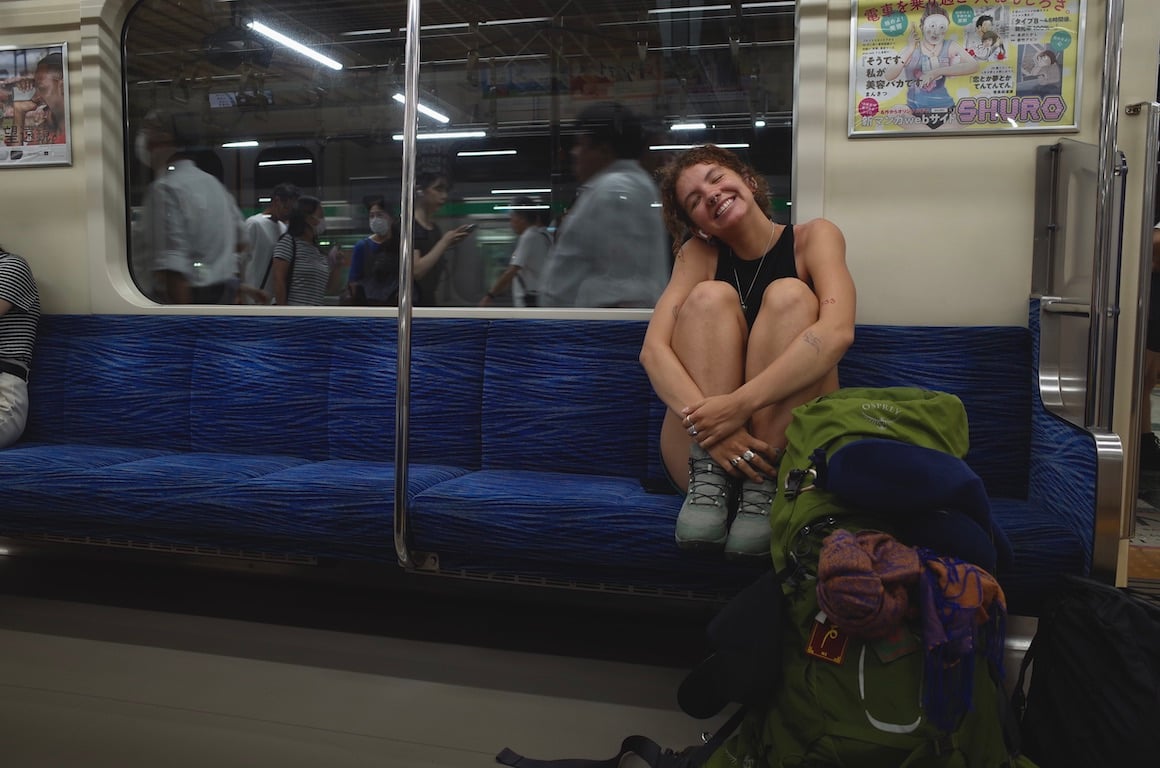
Photo: @audyscala
Where to Stay in Hiroshima: WeBase Hiroshima
Located within less than 1 km of Atomic Bomb Dome this chic, modern accommodation provides a mixture of pod style bunks in dorms alongside private rooms.
View on Booking.comStop 3 – Kyoto (Day 4-6)
Okayyy, so yeah, again, I’ve already gone into detail on why Kyoto is a wonderful place to visit, so of course, it’s on all the itineraries I’ve put together here.
With some more time on your hands here you could always hit up one of the quieter Japanese tea houses outside of the city that offer a more authentic and local experience. Neighbourhoods like Gion and Pontocho are also great places to explore if you’re looking to get off the beaten track.
Where to Stay in Kyoto: Hana-Touro Hotel Gion
Located close to Gion, Kyoto’s most famous geisha district, this offers a modern base from which to explore historic Kyoto. There are spacious rooms for two and four, with a choice of Western rooms or traditional Japanese sleeping arrangements
View on Booking.comStop 4 – Nara (Day 7)
I’ve mentioned Nara before so I am not going to repeat myself here. I’ve not added in any extra time here because honestly, a day is well enough. So just go and be at one with your new deer pals and have a lovely time.
Where to Stay in Nara: HARUYA Naramachi
Stay in this little cute traditional style Ryokan with an onsite Onsen, tea ceremonies and bike rental. It’s also super close to the deer!
View on Booking.comStop 5 – Kumano Kodo (Day 8-10)
This is somewhere very near and dear to my heart, and truly a LIFE-CHANGING experience.
The Kumano Kodo is a network of ancient pilgrimage trails located in the Kii Peninsula of Japan. These historic routes have been used for over a thousand years by pilgrims and travelers seeking spiritual enlightenment and connection with nature This trek truly allows you to follow in the footsteps of emperors, monks, and commoners who traversed these paths to reach the sacred Kumano Sanzan shrines.
The trek consists of several routes, each with its own distinct charm and difficulty level. You can choose to hike for three days, five days or even for a week or two.

Photo: @audyscala
There is a very well-traversed bus system on which you can hop on and off, skipping sections of the trail you don’t want to do, meaning if you only have a couple of days, you can still see the highlights and main shrines.
On the Kumano Kodo website, you can get maps and info about the routes as well as book your accommodation along the way, as most of the options consist of local guesthouses and ryokans.
If you don’t have time to trek Kumano Kodo, even though I highly recommend you do, just make sure you check out Kumano Nachi Taisha shrine. It’s a beautiful pagoda with a rushing waterfall in the background, incense igniting your soul and magic piercing through your bones.
Where to Stay in Kumano Kodo: Kumano Kodo Nagano Guesthouse
With garden views, traditional architecture and rooms with tatami floors, this is the perfect zen location to relax before or after exploring the mountains.
View on Booking.comStop 6 – Takayama (Day 11)
As I’ve mentioned this wonderful place already, there’s no need to tell you why this traditional town is so special. But if you time your visit right, attending one of Japan’s many festivals, the Takayama Matsuri Festival is an amazing cultural experience, full of floats and traditional food and dances.
Where to Stay in Takayama: Yukimurasaki
Offering rooms with heated tatami flooring, a private hot-spring bath and a balcony with nature views, this hotel is a traditional paradise in this incredible town.
View on Booking.comStop 7 – Mount Fuji & Lake Kawaguchiko (Day 12 & 13)
I’ve mentioned all the best things to do around here already, but If you have an extra day, try trekking up Mount Fuji for a truly once-in-a-lifetime experience.
The climb is best attempted during the official season – From July to the end of August although this is the busiest time to stay in Mt. Fuji and it can become crowded.
It is undoubtedly one of the most beautiful places in Japan, and watching the sunrise from the top is on many a backpacker’s bucket list.
Although it is one of the most popular things to do when travelling in Japan, bear in mind that it stands at an altitude of 3776m, and altitude sickness is a real possibility even though the climb itself isn’t very difficult. Anybody with a reasonable level of fitness can climb Mount Fuji but, if you can, it makes sense to do a bit of training first.
Where to Stay in Mt Fuji: T&T Fujiyama Guest House
Lovely property an easy walk from Shimoyoshida train station where you can stay in traditional Japanese rooms. The hosts are also super nice and will go out of their way to make your stay wonderful.
View on Booking.comStop 8 – Tokyo (Day 14-16)
I’ve mentioned Tokyo on all my other itineraries, so whilst I am not going to go over all the amazing things to do here again, I will say this.
Its hectic atmosphere and generally withdrawn and technology-consumed population can make it a somewhat challenging place for a solo backpacker. It can help to have a Japanese friend to show you around. Couchsurfing can be a great way to save money in a very expensive city and a way to meet friendly locals.
Where to Stay in Tokyo: UNPLAN Shinjuku
Shinjuku is the beating heart of Tokyo and the ideal place to stay for those who want to explore all of Japan. It’s close enough to the action, yet quiet at night, so you can still get a good night’s sleep.
View on Booking.comStop 9 – Nikko (Day 17)
Ok, so I’ve spoken in more detail about Nikko already in this post, but I have to mention this incredible experience I had here.
The most magical temple I’ve ever stepped foot in is, Kanmangafuchi Abyss, it’s a mystical place in the forest full of Jizu statues of different sizes and shapes right next to an electric blue ice-cold river. It’s one of those temples where when you touch the stones you can truly FEEL the energy of the past and magic courses through your bones.
Where to Stay in Nikko: Nikko Tokinoyuu
A 1-minute stroll from world heritage site Shinkyo Sacred Bridge, this lovely traditional Japanese hotel offers a public bath, tatami-mat flooring and traditional futon bedding.
View on Booking.comStop 10 – Sopporo/Hokkaido (Day 18-21)
Most travellers don’t plan a trip to Sapporo and Hokkaido. In fact, Hokkaido gets way too little love in the backpacking scene in Japan, so I’m here to fix that! In summer, Hokkaido is a vibrant lush green wonderland of mountains, wildflowers, and fruits to pick.
Come winter, however… holy shit is it cold! But it’s a dreamy Narnia-like snowscape with some of the most majestic fields of powder and frozen lakes that you’ll ever lay eyes on.
The northernmost of Japan’s four main islands, Hokkaido is to Japan what South Island is to New Zealand: a sparser population in a harsher landscape where only the most chill and off-beat of Japanese choose to live.
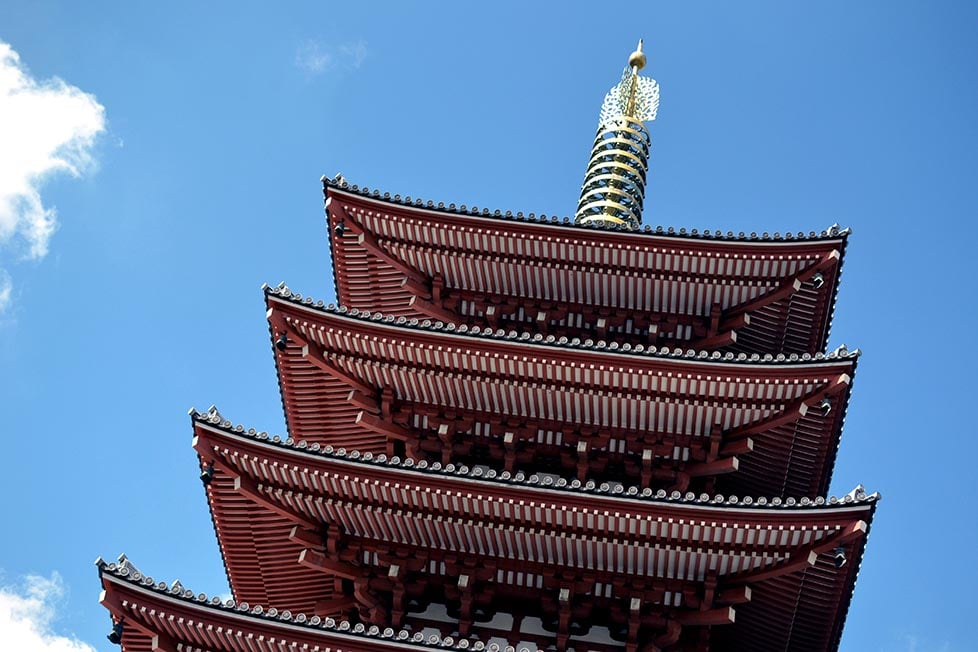
Photo: Nic Hilditch-Short
Sapporo is the capital of Hokkaido island, and, honestly, it’s a pretty cool city. It doesn’t have quite the smashing of tourist attractions that a lot of other Japanese cities do, but there are still plenty of cool hostels in Sapporo, quirky things to do, and infinite amounts of unrelenting food comas to swelter through.
If you’re looking for the off-kilter black sheep Japanese (particularly the ones that like a little greenery in their ciggies), you’ll find them in Hokkaido.
Also, it’s a pretty city! Mountains, greenery, and forest. Truthfully, I just have a real soft spot in my heart for my time staying in Sapporo.
Overall, Hokkaido is about as off the beaten path in Japan as you can get. Travelling it by hitchhiking is going to mean you meet the quirkiest and best of Japanese folks. And if you happen to travel it by motorbike, well, that’s just a rite of passage for many young Japanese seeking their first adventure.
Where to Stay in Sapporo: La’gent Stay Sapporo
La’gent Stay Sapporo features a 24/7 reception with helpful staff! The hotel is close to Sapporo’s well-known attractions, with Sapporo Clock Tower just a 10-minute walk away.
View on Booking.comJapan Itinerary – Travel Guide Tips and Pointers
Alright then, let’s have a look at a few tips for your Japan trip to make it the best it could be.
Things You Need to Know
Now I’ve covered the details of the itinerary, here are a few essential things to keep in mind:
1. Connectivity: Stay Online
Staying connected in Japan is a must for navigation, train schedules, and translation apps. Using an eSIM is one of the easiest ways to ensure you have reliable internet throughout your trip.
2. Transportation: Japan Rail Pass
Japan’s train system is world-renowned, and a Japan Rail Pass can save you a significant amount of money if you’re travelling between multiple cities. It’s especially useful for visiting regions like Kyoto, Osaka, and Hiroshima.
3. Insider Travel Tips
To make the most of your journey, understanding local customs, budgeting tips, and practical advice will go a long way. From learning how to navigate the rail system to mastering Japanese etiquette, preparation is key. Read my Japan travel tips to ensure a smooth trip.
4. Language and Etiquette
While English signage is common, learning a few Japanese phrases goes a long way. Japanese culture values respect and politeness, so take the time to familiarize yourself with basic customs, such as bowing and removing shoes when entering homes or certain establishments.
5. Budgeting and Cash
Japan is more cash-friendly than card-friendly in many places. ATMs can be found in convenience stores, but having cash on hand is essential, especially in smaller towns.
Now that you’re armed with the essentials, let’s dive into the ultimate Japan itinerary!
How many days should I spend in Japan?
That’s really up to you and what kind of trip and time constraints you have. Personally, I would say that the perfect amount of time is around 3 weeks in order to see the highlights plus a few more off-the-beaten-track locations. However, if you have only a week or two, you can hit many of the top places to visit in Japan, but you might be in for a busy trip.
What kind of travel budget do I need for my Japan itinerary?
Japan is expensive, not gonna lie. But due to favourable exchange rates (March 2025) a budget backpacker should be fine on around about $25 – $55 per day, whilst someone wanting more comforts might spend around $65- $135 a day.
Of course, this is highly variable and it entirely depends on your trip and what your standards are like. If you’re on a short trip then you’re probably going to want to splash out a bit more for fancier hotels and higher-end food. But whilst Japan isn’t Southeast Asia, it’s also reasonably affordable for backpackers looking to stay in hostels and eat at 7/11.
How to Get Around Japan
Getting around Japan is super easy, even with the language barrier. Japan has world-class public transport that is always on time.
The “Shinkansen” or bullet trains are the quickest way to get around the country but be warned, they can be pricey. The best tickets are usually available for those who book well in advance. You should also consider getting the Japan Rail Pass if you’re covering long distances. But be are aware, you can only buy this before you arrive.
More budget travellers might want to opt for the highway buses that also cover large areas of the country. Whilst slower, they’re much cheaper and still very reliable and convenient.
What to Pack for Japan
If you’re heading over in summer then you’ll be fine in warm weather gear like shorts, t-shirts and trainers. However, packing a lightweight rain jacket is always advisable as the humid summers here can bring with them some pretty impressive storms.
On the other hand, if you’re heading over in the winter, or you’re thinking about hiking in the mountains, you’ll want to bring with you a few extra layers. Be sure to add proper walking boots, hiking pants, base layers, a down jacket, gloves and waterproof outer layers to your Japan packing list.
If you’re skiing or snowboarding, then ya know, pack all the gear you’ll need for the slopes! But also remember, most resorts do offer most things you’ll need as rentals too.
Travel Security Belt
This is a regular looking belt with a concealed pocket on the inside – you can hide up to twenty notes inside and wear it through airport scanners without it setting them off.
Microfiber Towel
Hostel towels are scummy and take forever to dry. Microfibre towels dry quickly, are compact, lightweight, and can be used as a blanket or yoga mat if need be.
Petzl Actik Core Headlamp
A decent head torch could save your life. If you want to explore caves, unlit temples, or simply find your way to the bathroom during a blackout, a headtorch is a must.
‘Monopoly Deal’
Forget about Poker! Monopoly Deal is the single best travel card game that we have ever played. Works with 2-5 players and guarantees happy days.
Hanging Laundry Bag
Trust us, this is an absolute game changer. Super compact, a hanging mesh laundry bag stops your dirty clothes from stinking, you don’t know how much you need one of these… so just get it, thank us later.
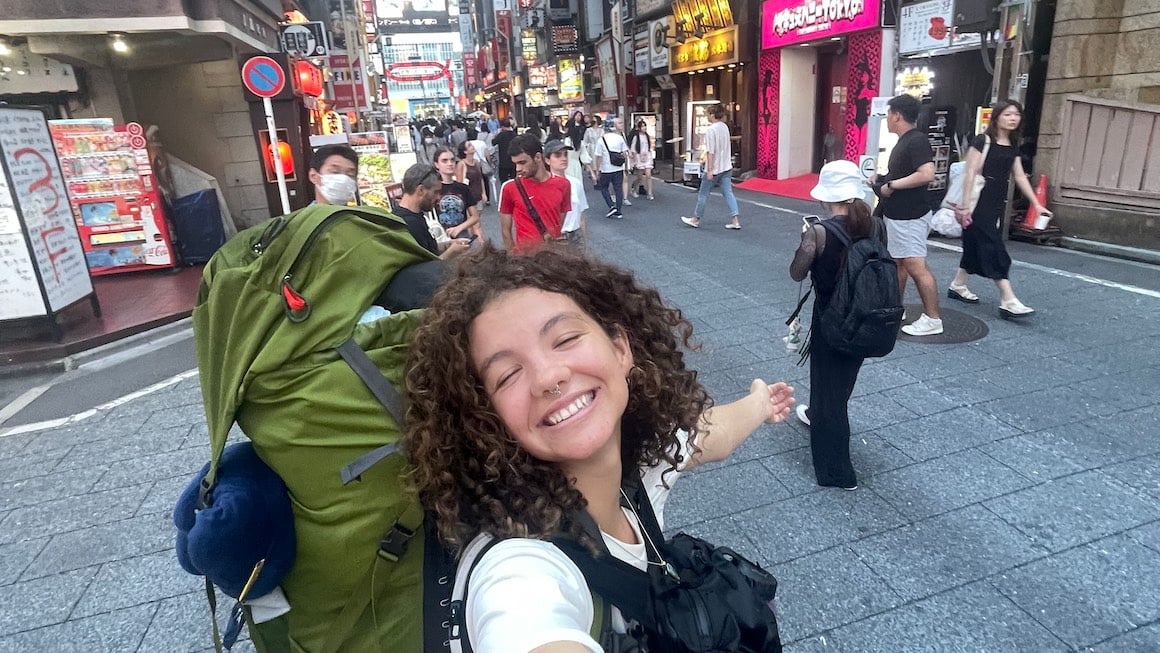
Getting Insured for Your Trip to Japan
Whilst Japan is a super safe country to visit and travel around, you should always make sure to have good travel insurance before heading overseas.
ALWAYS sort out your backpacker insurance before your trip. There’s plenty to choose from in that department, but a good place to start is Safety Wing.
They offer month-to-month payments, no lock-in contracts, and require absolutely no itineraries: that’s the exact kind of insurance long-term travellers and digital nomads need.
SafetyWing is cheap, easy, and admin-free: just sign up lickety-split so you can get back to it!
Click the button below to learn more about SafetyWing’s setup or read our insider review for the full tasty scoop.
FAQ on Japan Itinerary
Alright then, here’s me hoping I’ve covered all there is to know about an Itinerary for Japan, but if you’ve got any more questions then they’re bound to be covered below.
Final Thoughts on Japan Itinerary
Japan is a country that truly has it all —breathtaking landscapes, rich culture, and vibrant cities. Whether you’re wandering through ancient temples, savouring delicious street food, or marvelling at modern cityscapes, every moment here is unforgettable.
This itinerary, whether for 1, 2, or 3 weeks, is designed to help you experience the very best of Japan while uncovering hidden gems along the way.
From the peaceful beauty of Kyoto to the buzzing energy of Tokyo, there’s something for every traveller. So pack your bags, embrace the adventure, and let Japan’s magic unfold before you.
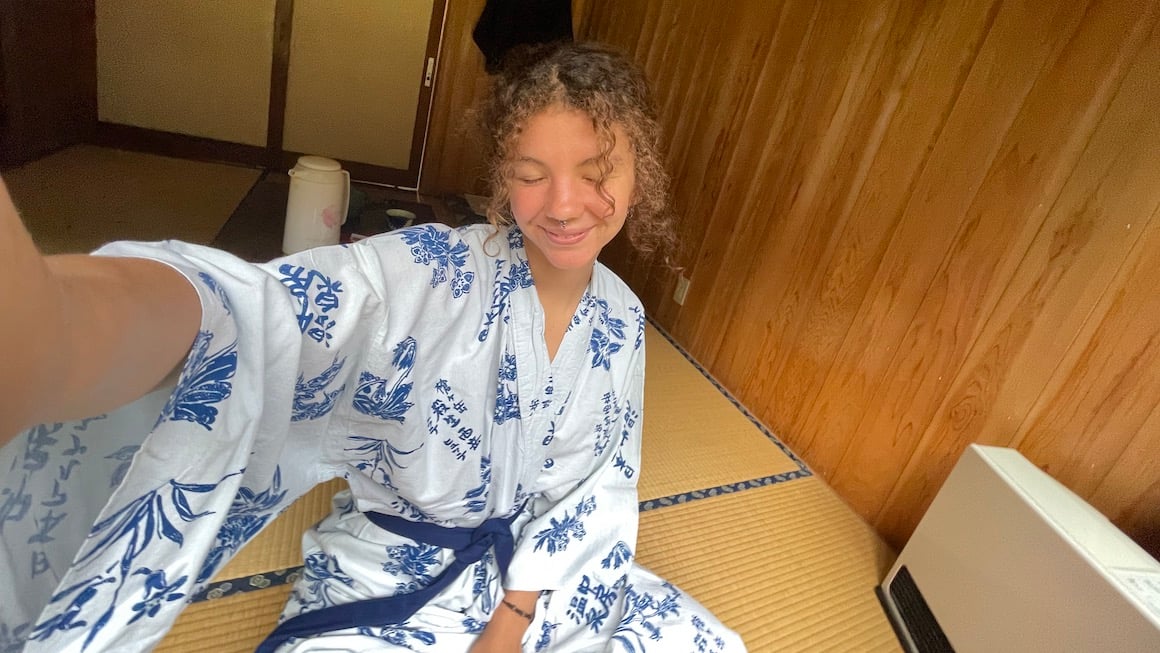
Photo: @audyscala
Buy Us a Coffee!
A couple of you lovely readers suggested we set up a tip jar for direct support as an alternative to booking through our links. So we created one!
You can now buy The Broke Backpacker a coffee. If you like and use our content to plan your trips, it’s a much appreciated way to show appreciation 🙂



